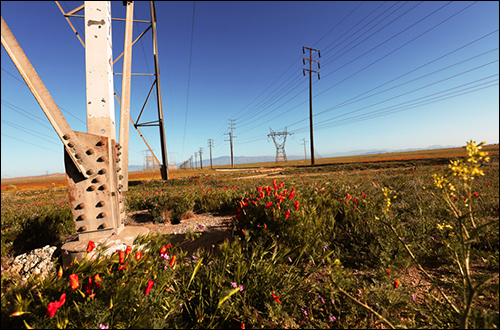Great River Energy provides electricity to 650,000 retail customers (homes, businesses and factories) across 50,000 square miles of rural Minnesota and a small part of Wisconsin, via a network of 28 distribution co-ops, 100 transmission substations and 550 distribution substations.
While the number of end-user customers it serves is relatively low, the complexity of this wholesale power cooperative’s operations is quite high, says Jim Jones, Great River Energy’s chief information officer and VP of information technology.
“We need to communicate with every one of those locations on a real-time basis,” Jones explains. In the past, Great River Energy communicated with all of those sites using a number of different technologies, ranging from microwave links to copper telephone lines. The system “was engineered, site by site, over a long period of time. [Decision-makers] found out what the needs were and then plotted the best solution for each location at that time. But we ended up with up to 15 different technologies in use, and multiple connections to the same location.”
A decade ago, Great River Energy began transitioning to an updated, more secure and uniform communications infrastructure, based on the use of internet protocol and broadband communications. “We wanted one network that would hook all locations together” and provide an infrastructure for data communications, Jones says.
That infrastructure, now 10 years old, is built largely on a fiber network, but because the area Great River Energy serves is largely rural, getting secure, consistent data communications from the main fiber-based network to the most remote locations in the company’s service area presented a challenge. Jones uses a roadway analogy. “It’s like a network of interstate roads, to state highways, and then gravel roads,” he says. “So we use fiber to form the interstate and state highways, and wireless communications to connect from the state highways down to the gravel roads.”
After 10 years of use, the wireless communications equipment Great River Energy used started to require frequent repairs. But the vendor that provided that equipment is no longer in business, so Great River Energy decided to transition over to FullMAX, an IP-based wireless communications service provided by Sunnyvale, Calif.-based Full Spectrum. FullMAX, based on the IEEE 802.16 (or WiMAX) protocol, is designed to offer a secure field area network (FAN) to provide data communications that electricity providers, oil and gas field producers and other utilities use to support their operations, respond to customer demand and enable smart-grid applications. The IEEE and the Electric Power Research Institute (EPIR) are developing a new communications standard designed for use by utilities, to be called 802.16.s, or Gridman, based on FullMAX, says Stewart Kantor, Full Spectrum’s CEO.
“One of the key innovations [has been] to tie the standard not to a frequency, but to a MAC layer, where you define how the data is put together. This standard is for basically any sub-gigahertz frequency,” says Kantor, noting that this supports long-range signal propagation.
A robust and secure communication network is a vital foundation to building out the smart grid, Jones explains. “There is the power grid, everything from substations down to the outlets in your home, and running parallel to that is the communications network,” he says. “We operate and need both of them, and we can’t operate when either of them [goes down]. It is also important to know that this communications network is a private internet.”
Kantor says Full Spectrum works with its customers to build multiple layers of security into this private internet. The first layer is the fact that FullMAX and the public internet are both physically and logically separate—FullMAX does not leverage the same equipment or data networks as the public internet. Second, within this private internet, customers can establish virtual private networks to secure communications. Third, substations and other parts of the grid infrastructure use physical security on the communications equipment—for example, if someone were to unplug or tamper with an Ethernet port, this could trigger an alarm. Finally, the data transmitted wirelessly is encrypted.
Jones says building a secure communications network, based on standards, is key because the electric grid has been transformed throughout the last few decades. Analog controls are long gone, he adds, and every aspect of the grid, from transformers to relays to electrical protection devices, are now all managed and monitored through the use of electronic interfaces that, in many cases, are remotely controlled. “The whole smart-grid notion is that the grid is more reliable, more secure and more flexible and efficient,” he states. “We can detect outages sooner than we did in the past. And we can know what went out, and where—and if we can’t fix it remotely, we know where to send our crews.”
Smart-grid technology also enables Great River Energy to monitor how the grid’s electrical load is distributed, in real time, and to determine what is creating the most demand. “We can see if it’s demand for [powering] irrigation, or industrial uses, or residential,” Jones says. “With that information, we can make our demand response programs more granular—and this optimizes our supply.”


